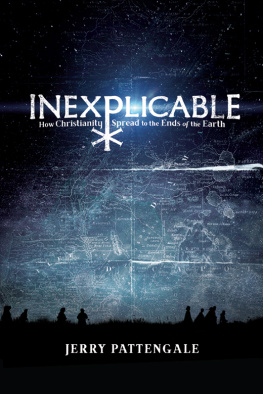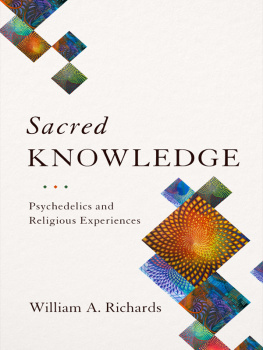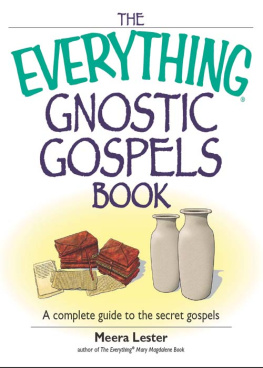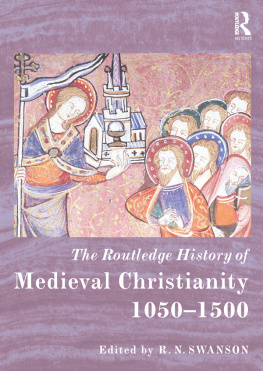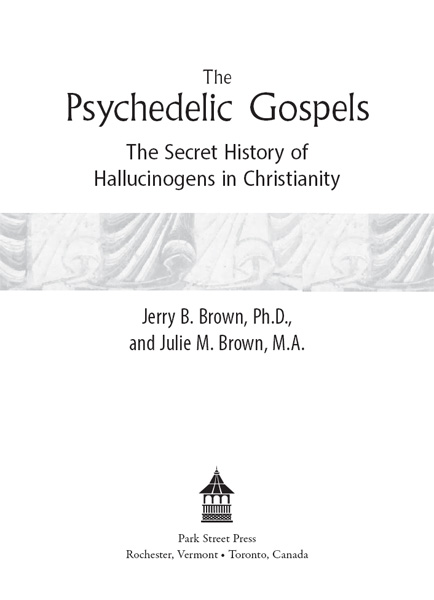
The Psychedelic Gospels
The Psychedelic Gospels is heretical, revolutionary, and outrageous. It claims that there is a direct relationship between the founding and development of Western religions and psychoactive substances and that this is a continuation of an amalgamation of many mind-altering practices and fertility cults found in the Middle East. The scholarship behind these provocative perspectives is impressive, and the hidden subtexts of Christian art are compelling.
STANLEY KRIPPNER, PH.D., PROFESSOR OF PSYCHOLOGY AT SAYBROOK UNIVERSITY AND COAUTHOR OF PERSONAL MYTHOLOGY
Mushrooms, mushrooms, mushrooms. Once you start looking you see them everywhere. Keep your mind open. Wider!
BEN SESSA, MBBS (MD), MRCPSYCH, PSYCHIATRIST, PSYCHEDELIC RESEARCHER, AND AUTHOR OF THE PSYCHEDELIC RENAISSANCE
A fascinating piece of scholarly work that opens new possibilities of understanding human consciousness.
DAVID CROSBY, SINGER-SONGWRITER
We live at a time when confused and undisciplined thinking clashes with narrow-minded bigotry. Thus, it is more important than ever to keep an open mindopen to new ideas, open also to rigorous scholarship. Too often, wishful thinking has misled well-intentioned academics, and the media are notorious for sensationalism. I, therefore, applaud the authors for proposing the establishment of an interdisciplinary committee to evaluate the discoveries they present and the conjectures they make in The Psychedelic Gospels.
BROTHER DAVID STEINDL-RAST, ORDER OF SAINT BENEDICT, COFOUNDER OF GRATEFULNESS.ORG
This book expertly navigates through the iconography of mushroom symbolism throughout the ages. One clear message comes through: mushrooms have played a central role in the evolution of human consciousness and, indeed, religion. Thought provoking and well articulated, the authors present a solid case for their thesis. This is an important book to contemplate.
PAUL STAMETS, AUTHOR OF MYCELIUM RUNNING: HOW MUSHROOMS CAN HELP SAVE THE WORLD
Part travelogue, part anthropological meditation, and part groundbreaking study showing the use of sacred mushrooms in Christian iconography, The Psychedelic Gospels gives readers one of the most unusual books they will ever encounter. Jerry and Julie Brown present a lively account of a psychedelic theory of religion and tell us why its been suppressed for so many years.
MITCHELL KAPLAN, FOUNDER OF BOOKS & BOOKS, PAST PRESIDENT OF THE AMERICAN BOOKSELLERS ASSOCIATION, AND COFOUNDER OF THE MIAMI BOOK FAIR INTERNATIONAL
Impeccably researched and lavishly illustrated, The Psychedelic Gospels reads like a page-turning mystery thriller. An interdisciplinary treasure chest overflowing with rare information, unique insights, and some truly extraordinary head-slapping aha moments. The authors present a compelling case for the influence of entheogens among early Christians.
DAVID JAY BROWN, AUTHOR OF DREAMING WIDE AWAKE AND THE NEW SCIENCE OF PSYCHEDELICS
The authors make obvious and pleasant the idea that there was a high degree of psychedelic use in the early Christian church, far from the exoteric component, something mysterious kept for the initiated few, which might arouse some anger at the system that kept it from their beloved faithful.
CARLOS ADRIN HERNNDEZ TAVARES, COAUTHOR OF MITOLOGIA PERSONAL
Acknowledgments
W ith a click of the mouse, we sent the digital manuscript off to the publisher. We could never have come so far without the assistance and guidance of family, friends, and colleagues. We would like to express our heartfelt gratitude to:
Our children, for their infinite patience in putting up with our turning the living room into a library and the kitchen into a writers cave.
Our faithful readers, who cared enough to flag our flaws and praise our progress: Bree Brown, Connie Brown, Michael Brown, Yves Colon, Daniel and Charlotte Decker, Mikey Hall, Stephen Levien, Carole Myers, and Jerry Weisberg.
Our diligent research associates: Matthew Lupu, M.A., for researching Latin translations; Jordon Rupp, for astute insights into medieval art; and Martin Tsang, Ph.D., for contributions on the origins of religion.
Our photography advisors, Isaac Hernndez and Scott Redinger-Libolt, for their valuable assistance in arranging the gallery of images presented in this book.
Our many teachers: the psychedelic researchers and mind explorers too numerous to mention, whose insights and works are cited throughout this book.
Our literary guides: Mitchell Kaplan, founder of Books & Books in Miami, who encouraged us to focus on R. Gordon Wassons seminal role in the study of sacred mushrooms; Michael Levin, writer par excellence, who schooled us in the differences between storytelling and academic prose; and John Kelsey, retired publisher, who convinced us that we did not need a literary agent, and who encouraged us to attend BookExpo America in New York, where we found our publisher, Inner Traditions.
In this era of bottom-line publishing, we were amazed at first by the effusive praise bestowed by authors on Inner Traditions. We now know firsthand that this praise is richly deserved. We could not have found a more courageous, knowledgeable, and nurturing publisher for this controversial project. Our sincere gratitude to everyone at Inner Traditions who enhanced this book through their unique expertise: Priscilla Baker, typesetter; Blythe Bates, publicity; Nicki Champion, cover design; Jon Graham, acquisitions editor; John Hays, sales and marketing; Jeanie Levitan, editor in chief; Erica B. Robinson, catalog editor; Patricia Rydle, assistant to the editor in chief; and Ehud Sperling, publisher.
A special word of appreciation to Mindy Branstetter, who in addition to being an excellent editor made all of our wishes come true. Thanks, Mindy.
Last, to all who read this book: we thank you for exploring the possibility that there are many pathways open to those who seek spirituality in the modern world and to those eager for affirmation that the Divine is not deadincluding pathways accessed through sacred plants, one of Gods miraculous creations.
Preface
An Invitation to Readers
T here is an old saying, If you want to hide something, put it in plain sight. To our surprise we learned that this saying is especially true for Christianity, where medieval works of art were created to illustrate the teachings of the Bible for the largely illiterate population. A close look at these religious works of art reveals the presence of psychedelic plantshidden in plain sightfor centuries.
Psychedelics?
Hidden in plain sight... in Christian churches?
Yes, thats exactly what we said.
Working with stunning visual evidence found in cathedrals and churches, we invite you to join us as we relive our discovery of the Psychedelic Gospels and propose an alternative theory of the origins of Christianityone radically different from that portrayed in the Bible.
This book takes you along, step-by-step, on our decade-long anthropological adventure, providing an easily readable account of this controversial theory.
It was during the turbulent decades of the 1960s and 1970s when we had our first experiences with psychedelics, a class of drugs that in time we came to know as entheogens: psychoactive plants and chemicals that generate mystical experiences. It was through entheogens that we first came to experience God as the divine intelligence that permeates the universe.
Later, in 2006, we made an archaeological discovery that caused us to seriously consider the role of entheogens in the foundations of Judeo-Christianity. At that point our personal experiences with psychedelics merged with our professional interests (Jerrys in anthropology and religion, Julies in psychotherapy and spirituality), and we felt compelled to undertake a search for evidence of entheogens in Christian art.
Next page


